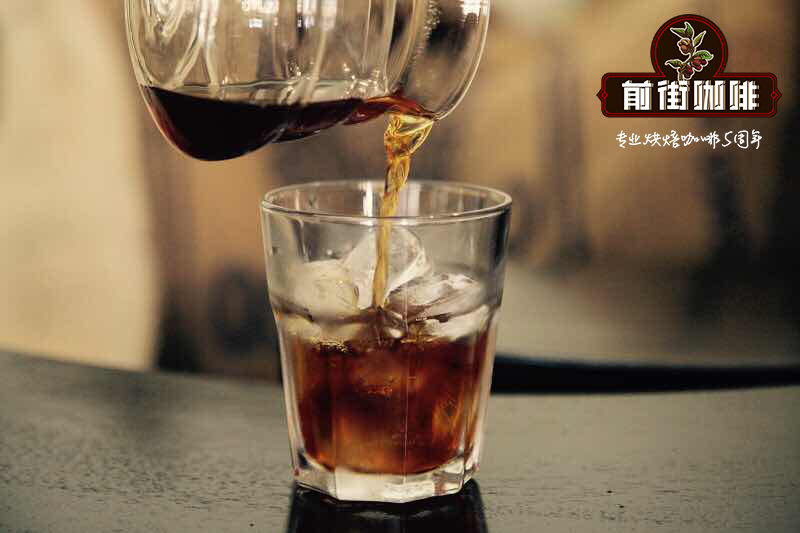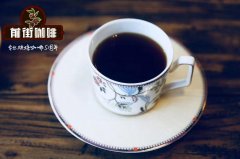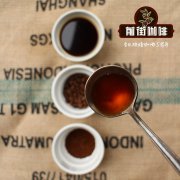What are the flavor and taste characteristics of coffee beans from the Mengano Cooperative in Africa [Congo]? Lake Chev, Congo

Professional coffee knowledge exchange more coffee bean information please follow the coffee workshop (Wechat official account cafe_style)
What are the flavor and taste characteristics of coffee beans from the Mengano Cooperative in Africa [Congo]? How do the bourbon coffee beans taste in Lake Cheever, Congo?
The Democratic Republic of the Congo is located in Central Africa, which runs through the north-central part of the equator. The local forest cover is about 58.7%. It is the seventh largest tropical forest in the world. It is also rich in agricultural products, most of which are tropical crops. Suitable for growing coffee in Robusta; to the east is the volcanically active edge of the African graben, near Lake Keefe, which is about 1460 meters above sea level. The coffee beans in the Keefe producing area of the Congo get their name from Lake Keefe, which borders Rwanda.
Congo joined the East African Fine Coffee Association (Eastern Africa Fine Coffee Assosiation) in February 2010, becoming the 11th member of the organization, with a view to further improving its coffee quality and export volume.
Congo's coffee is mainly grown around Lake Kiev (Kivu); Lake Kiev is a very good coffee-growing area, with many pristine forests along the coast, with an average annual temperature of about 19 degrees Celsius, a warm and humid climate, fertile land and a geographical environment more similar to that of neighboring countries producing outstanding Arabica species, such as Kenya, Rwanda and Tanzania.
The coffee grown in Congo has a unique flavor, which has been favored by European and American roasters in recent years, and its production capacity has increased steadily, rising to more than 9 million metric tons in 2016 (even Starbucks has actively invested). The visibility of Congolese coffee beans in the world is much less well-known than his diamonds and precious metals. Mainly due to years of war, this jungle-densely populated coffee producing area has been beacon-raging over the past 20 years, with more than 5 million deaths and injuries conservatively estimated, making it difficult for foreign buyers to dig deep into this potential country. Congo's unstable politics and corrupt regime also make this region with great potential for fine coffee still have a long way to go to become a first-class coffee country in the world. Overseas investors operating in the country often face the threat of kidnapping, extortion, forgery and even death, especially when the demand for overseas coffee beans increases. (some people even call Congo the most dangerous coffee producing area in Africa, so it is difficult for us to get internal information on the producing areas.)
Muungano Coffee Cooperative:
In Swahili, "Muungano" means & # 39; Unity & # 39, guiding farmers who are mainly used in Muungano coffee cooperatives. Batembo and Rwanda were originally divided by war in the eastern part of the Congo. Through cooperation, they work together again to create a better future for their families. From 350 founding members in 2009, the cooperative has grown to more than 4000 members in 2014, and Muungano farmers are committed to producing high-end specialty washed Arabica coffee. They invest in coffee nurseries and set up community-level cleaning stations; by planting new saplings and strictly harvesting coffee refurbished land. Muungano, which has received extensive training in cupping skills and the common language of the professional coffee market, opened two new cleaning stations in 2014.
Farmers tend to naturally use homemade compost and mulch. As coffee is interspersed with villages and homes, they think it is important for people's health as well as the environment. Take measures to combat the danger of landslides in heavy rain, including planting trees to strengthen the soil structure.
Producing area: Keefe Lake
Producer: Menggano Cooperative
Treatment: traditional washing treatment
Rating: SC16/18
Variety: primary bourbon species
Altitude: 1300 to 1460 m
Flavor description: grass flavor, apple acidity, sweet citrus fruits, chocolate, maltose syrup, black sugar and chocolate aroma tail, clean, smooth, full of texture of African beans.
Qianjie recommended cooking:
Filter cup: Hario V60
Water temperature: 90 degrees
Degree of grinding: small Fuji 3.5
Cooking methods: the ratio of water to powder is 1:15, 15g powder, the first injection of 25g water, 25 s steaming, the second injection to 120g water cut off, waiting for the powder bed water to half and then water injection, slow water injection until 225g water, extraction time about 2:00
Analysis: using three-stage brewing to clarify the flavor of the front, middle and back of the coffee. Because the V60 has many ribs and the drainage speed is faster, when the water is cut off, it can prolong the extraction time and better extract the nut and chocolate flavor of the tail section.
Flavor: the level is changeable, the whole is clean, the taste is thin, the finish is long-lasting caramel sweet, there will be a hint of bitterness.
Important Notice :
前街咖啡 FrontStreet Coffee has moved to new addredd:
FrontStreet Coffee Address: 315,Donghua East Road,GuangZhou
Tel:020 38364473
- Prev

Arumanis Honey processed West Java | Indonesian Java Coffee | Honey treated Coffee
Professional coffee knowledge exchange more coffee bean information please follow coffee workshop (Wechat official account cafe_style) Indonesia Arumanis honey treatment West Java (S795) Indonesia (S795 Variety) West JAVA Aromanis Honey Variety Source: S795 = S288 / Kent ((S288 (S26) x Typica) / Arabica x Liberica)
- Next

Congo coffee producing country-Lake Kivu Kaisa washing plant red bourbon coffee flavor? Alabica, Congo
Professional coffee knowledge exchange more coffee bean information please follow the coffee workshop (Wechat official account cafe_style) Congo coffee country-Lake Kivu Kavisa washing factory red bourbon coffee flavor? What is the variety of Arabica coffee beans in Congo? Coffee in Congo is mainly grown around Lake Kiev (Kivu); Lake Kiev is a very good coffee-growing area along the coast.
Related
- Detailed explanation of Jadeite planting Land in Panamanian Jadeite Manor introduction to the grading system of Jadeite competitive bidding, Red bid, Green bid and Rose Summer
- Story of Coffee planting in Brenka region of Costa Rica Stonehenge Manor anaerobic heavy honey treatment of flavor mouth
- What's on the barrel of Blue Mountain Coffee beans?
- Can American coffee also pull flowers? How to use hot American style to pull out a good-looking pattern?
- Can you make a cold extract with coffee beans? What is the right proportion for cold-extracted coffee formula?
- Indonesian PWN Gold Mandrine Coffee Origin Features Flavor How to Chong? Mandolin coffee is American.
- A brief introduction to the flavor characteristics of Brazilian yellow bourbon coffee beans
- What is the effect of different water quality on the flavor of cold-extracted coffee? What kind of water is best for brewing coffee?
- Why do you think of Rose Summer whenever you mention Panamanian coffee?
- Introduction to the characteristics of authentic blue mountain coffee bean producing areas? What is the CIB Coffee Authority in Jamaica?

